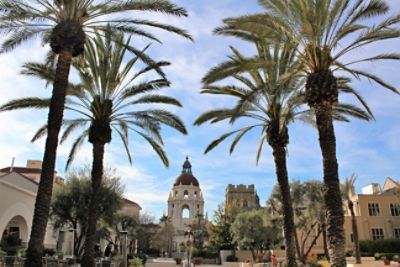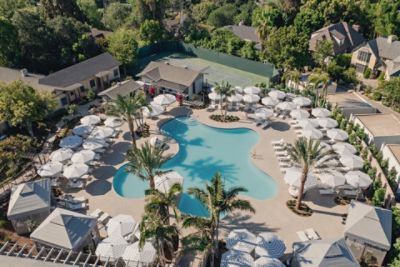From arts and culture to dining and shopping, experience the best things to do in Pasadena and beyond.
READ MORE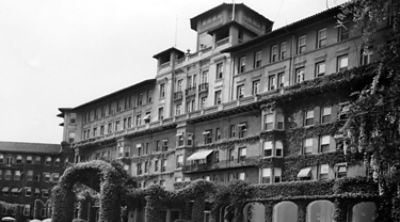
DISCOVER OVER 100 YEARS OF ENCHANTING HOSPITALITY
As Los Angeles' original getaway, The Huntington Hotel has been an exclusive resort destination since 1914, with a reputation for fine service, luxury, and leisure. Take a trip down memory lane by learning more about its exciting history over the past 110 years.

1907-1911
Originally opened in 1907 as the Hotel Wentworth, the property was only partially completed, with a temporary roof above the fourth floor. Heavy rains fell during the hotel's first season, driving guests to alternate resort areas. Meanwhile, construction costs skyrocketed. A disappointing first season forced the Hotel Wentworth to close its doors, until railroad tycoon and art collector Henry Huntington purchased it at auction in 1912 and renamed it the Huntington Hotel.
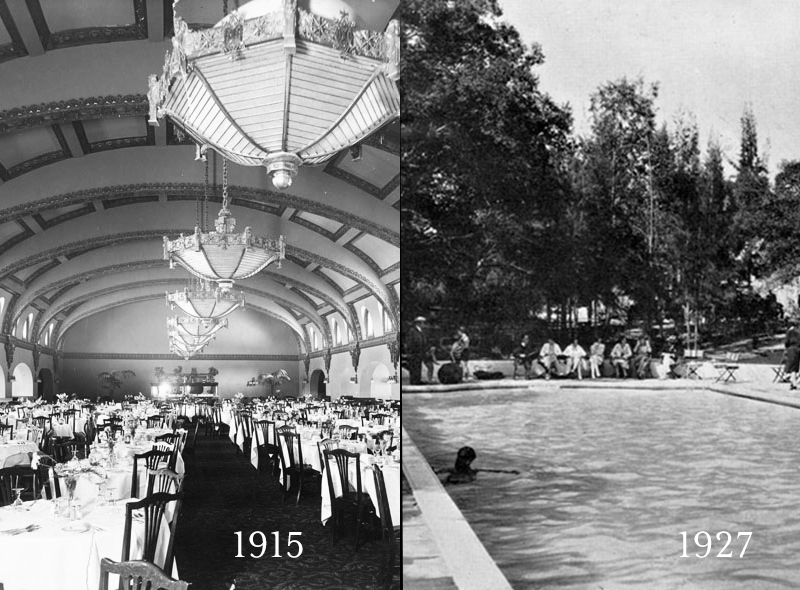

1914-1929
Huntington hired prominent Los Angeles architect Myron Hunt (Rose Bowl, Ambassador Hotel, Mission Inn) to redesign the main building and grounds. It opened in 1914, transformed into a beautiful winter resort. The 1920s were a prosperous time for the hotel, as Midwestern and Eastern entrepreneurs discovered California’s warm winter climate. Celebrated writers, entertainers, educators, religious and political leaders, royalty and sports personalities joined businessmen in their discovery of the enchanting resort. The hotel’s reputation for fine service began with long-time general manager and later hotel owner Stephen W. Royce. His success was due to his personal acquaintance with each winter guest and special attention to their needs. Formal dinners were held each evening with dancing in the elegant Georgian Ballroom. By 1926, the hotel’s success prompted Royce to open the property year-round. At this time, California’s first Olympic-sized swimming pool was added as a special attraction for summer guests.
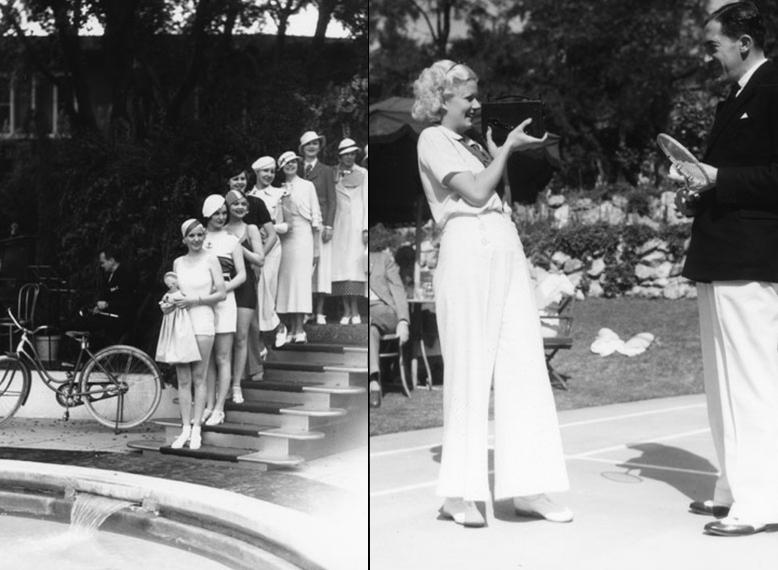

1930-1940
While the Great Depression no doubt dampened the livelihoods and business prospects for most, The Huntington Hotel persisted. Clientele thinned from a bevy of wealthy entrepreneurs to the super rich, such as film stars and royalty. Days of leisure saw everything from Jean Harlow playing badminton on the courts to guests having boat races and fashion shows at the pool. When financial institutions closed in 1933, General Manager Stephen Royce had scrip issued for his guests to use as cash and be able to purchase goods and sundries. Eastman Kodak, Princess Erik of Denmark, and Edward Bausch (Bausch & Lomb) were a few who made use of this enterprise.
1933 also saw the installation of 41 paintings by artist Frank Moore (who along with his family was invited to live on the property and enjoy all the food they could eat during the year he spent working on the art) on the gables of the hotel's redwood footbridge, spanning the ravine connecting the two sides of the property. The 41 scenes depict California's natural scenery and iconic landscapes, and turned the site into one of only two Picture Bridges in existence in the world.
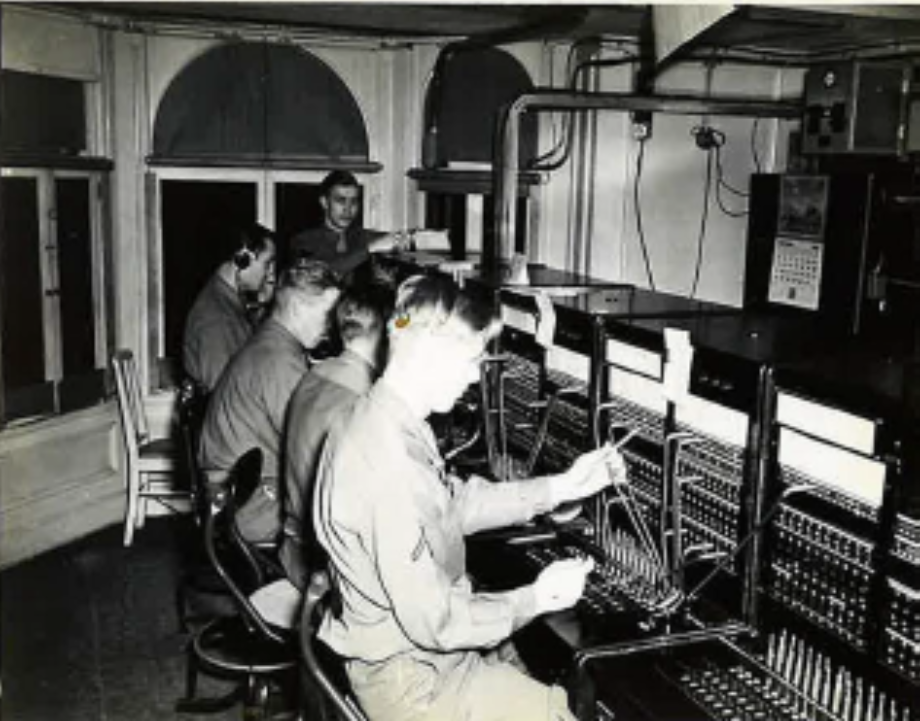

1941-1945
When World War II broke out many hotels around the country were turned over for military and hospital use. Backed by the Pasadena Chamber of Commerce, Royce petitioned the Secretary of War for the hotel to remain open for civilian use. He was granted this request, and while the U.S. Army's 35th Division did establish their headquarters in the east wing of the hotel, the remainder of the property was permitted to stay open for the public. The Army's command center was located inside what is now the Carriage House, and the hotel's complex tunnel system beneath the property (previously used for transporting Huntington's possessions back and forth to his home, now The Huntington Library) served as storage and shelter. During end of war, prominent scientists including Dr. Vannevar Bush of the Manhattan Project, president of UCLA, and Dr. Robert Oppenheimer met in the hotels' Finleen Cottage for a top secret meeting about the future of the Project.
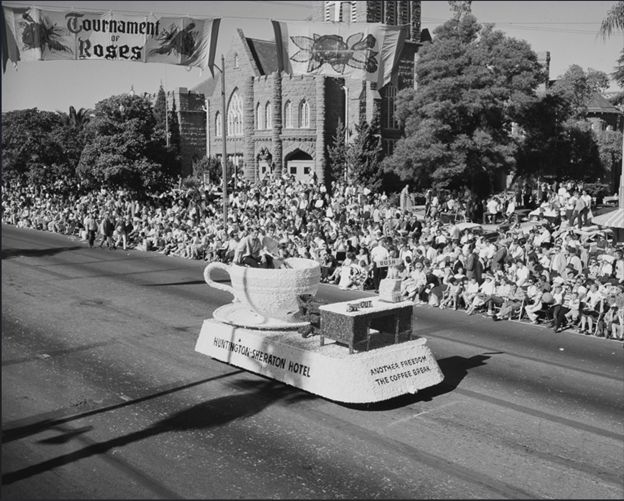

1950-1980
In 1954 The Huntington Hotel was sold to the Sheraton Corporation; the Lanai Building was added in 1967 due to the increased demand for rooms. Various restoration projects were undertaken, even as the hotel changed hands to different general managers after the retirement of Stephen Royce in 1969, and ownership changed to Keikyu U.S.A. in 1974. In 1980, a refurbishment project unearthed the original gilded ceiling of the Georgian Ballroom, which had been covered by Sheraton in the 50s. Throughout these changes the hotel maintained its standards of luxury, elegance and excellence, as well as the traditions it had continued for decades, such as placing a float in the annual Tournament of Roses' Rose Parade on January 1.
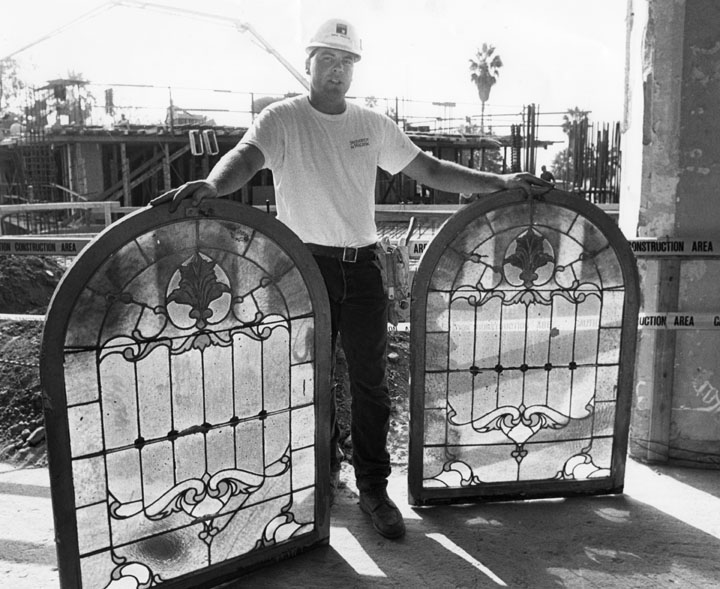

1985-1991
In 1985, tests revealed the hotel possessed only 1/4 of the structural strength required by modern earthquake standards. The hotel closed, and plans were proposed to demolish the hotel and rebuild to its original architectural footprint while meeting the required safety standards. A special election was called and passed with a 58% majority. The rebuild was completed and the hotel reopened as The Ritz-Carlton Huntington Hotel in 1991. Interestingly, during the demolition, a construction worker accidentally discovered the original stained glass windows in the Georgian Ballroom which had been covered during WWII. These have been restored and exist today.
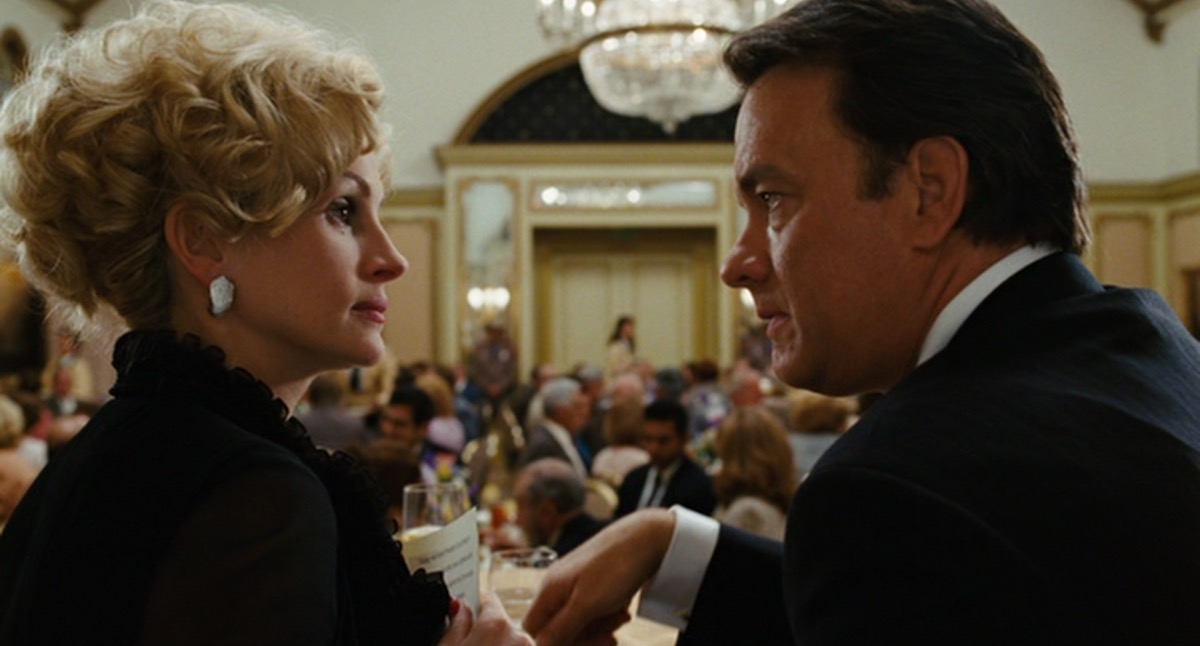

ON THE BIG SCREEN
The Huntington Hotel has been a backdrop for movies and television since the era of silent film, a distinction that continues to this day. Catch glimpses of the property in Beverly Hills Ninja (1997), The Parent Trap (1998), Seabiscuit (2003), Flags of Our Fathers (2006), Charlie Wilson's War (2007), Saving Mr. Banks (2013) and television shows such as Murder She Wrote, Remington Steele, Westworld, Modern Family, Lucifer, and America's Next Top Model.
*Photo: Universal Pictures/Miramax
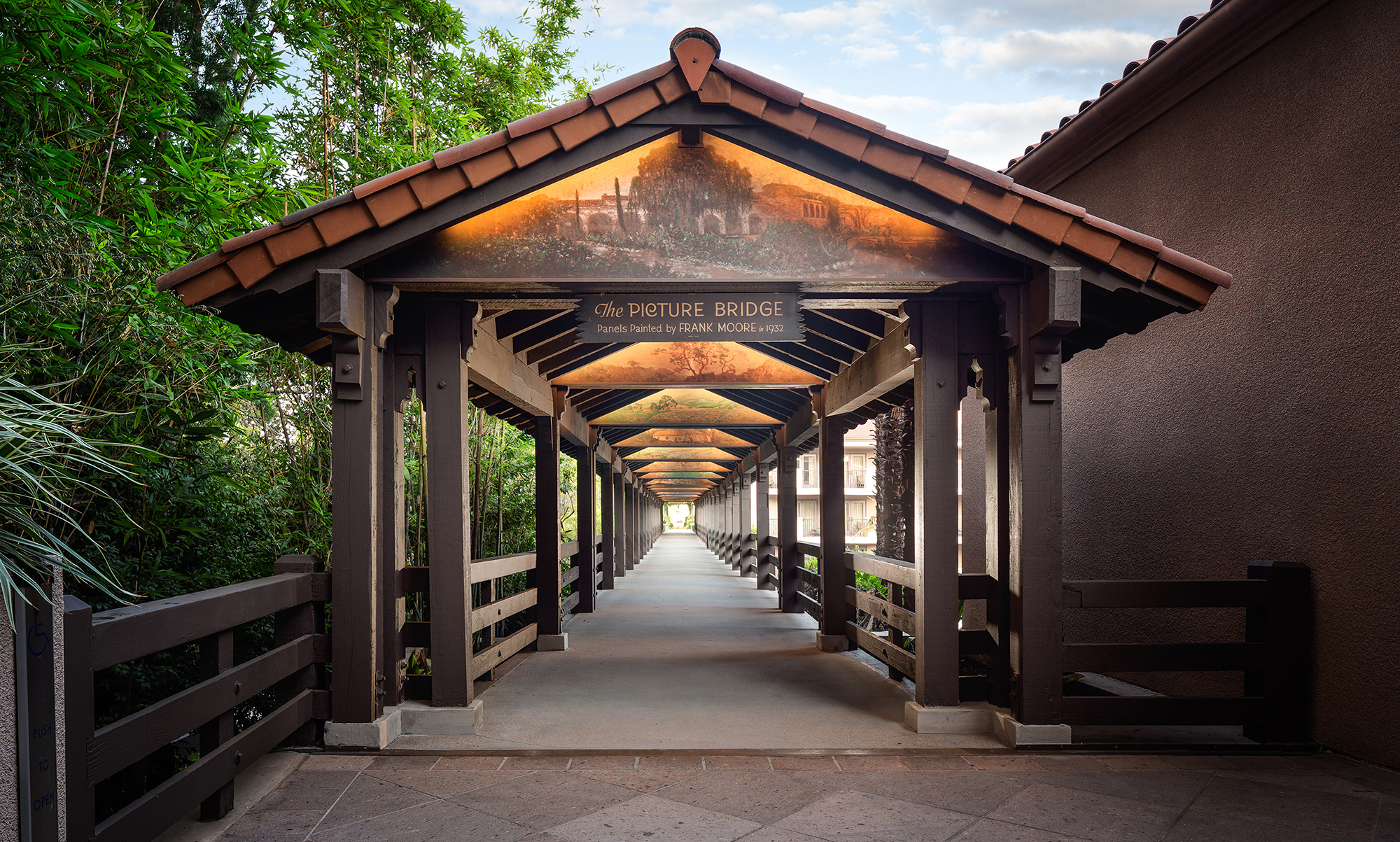

2008 - CURRENT DAY
Langham Hospitality Group purchased the property in 2008 and invested millions in the property, renovating The Royce Steakhouse, The Tap Room, five of the cottages and Chuan Spa, and became globally certified for its commitment to sustainability with EarthCheck, a status maintained annually. In 2020 in partnership with Pasadena Heritage, the hotel restored the historic Picture Bridge, reconstructing worn areas with salvaged original materials and new construction that offered safety and support. The centerpiece of the restoration was the installation of 41 replica paintings to the bridge's gables, giving the bridge back its original splendor.
